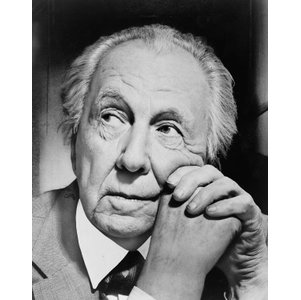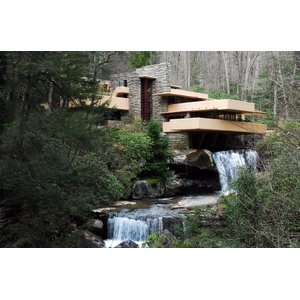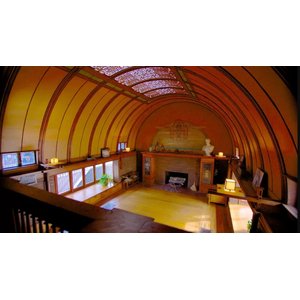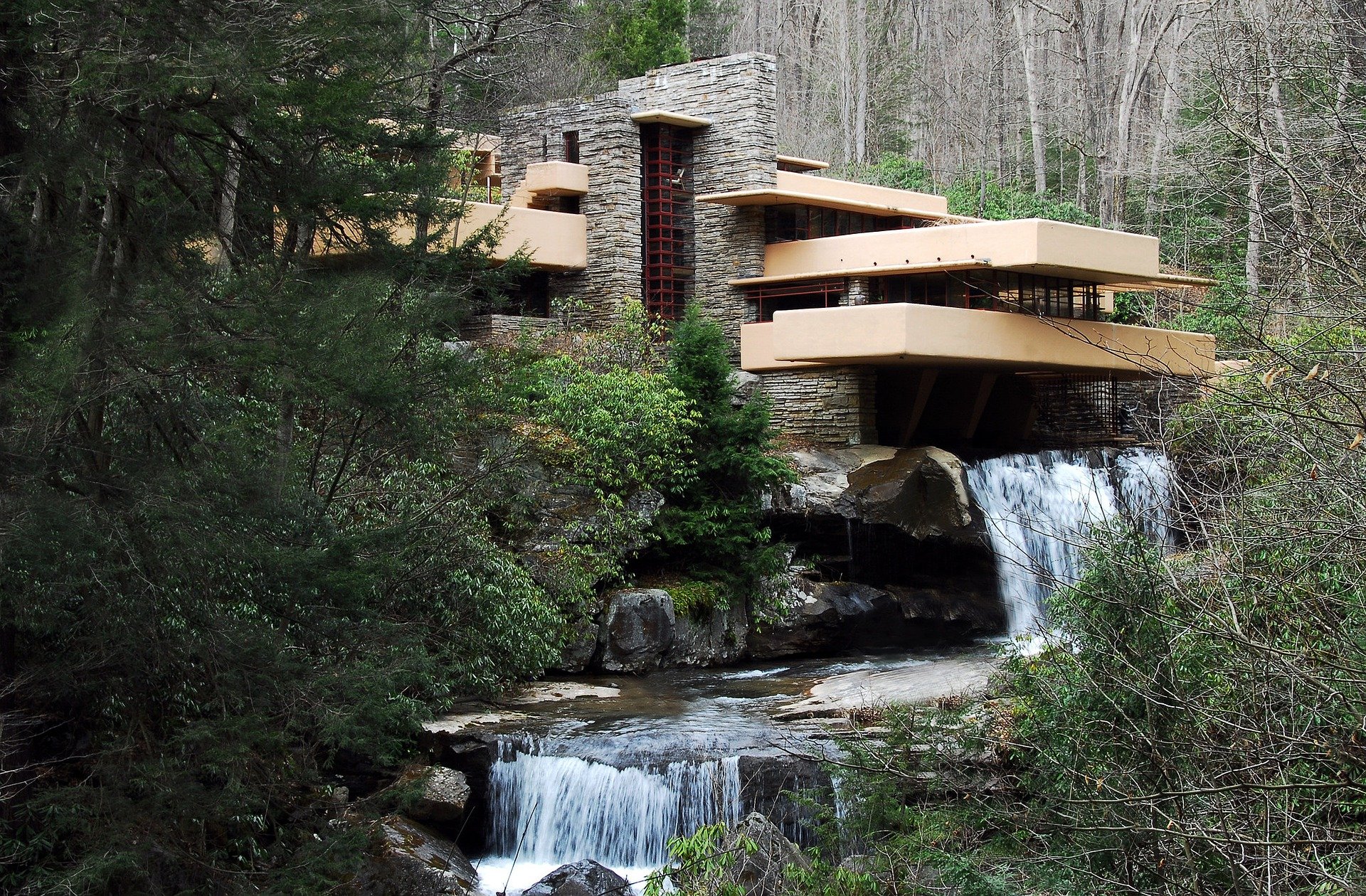
Frank Lloyd Wright has always been one of my favorites and since this year marks the 150th anniversary of his birth, it seemed like the perfect opportunity to reflect on one of the most influential architects of all time and review his significant contributions to architectural design.
Wright was committed to designing in harmony with the environment, a philosophy he called ‘organic architecture’. According to Wright's organic theory, all components of the building should appear unified, as though they belong together. Nothing should be attached to the structure without considering the effect on the building’s whole. To unify the house to its site, Wright often used large expanses of glass to blur the boundary between the indoors and outdoors.
A pioneer of what came to be called the Prairie School movement of architecture, he also designed original and innovative offices, churches, schools, skyscrapers, hotels, museums and other structures. In addition, he often designed interior elements for these buildings as well, including furniture and stained glass.
In the early part of the twentieth century, Wright’s ‘prairie houses’ mirrored the land around Chicago. Prairie style homes of the era were typically one or two stories and contained one or more of these features: open floor plan, strong horizontal lines, narrow rows of windows, a pronounced central chimney, low roofs with overhanging eaves, built-in cabinetry and a liberal use of natural materials such as stone and wood. It is widely agreed that the open floor plan concept allowing a free flow of space from room to room was the most significant advance of modern architecture.
In the early 1920s, Frank Lloyd Wright designed a "textile" concrete block system reinforced by an internal system of bars. Wright first used his textile block system on the John Storer House in Hollywood, California, in 1923. The house is now used in films, television, and print media to represent the future. In typical Wright fashion, the joining of the structure to its site by a series of terraces that reach out into and reorder the landscape, make it an integral part of the architect's vision.

Last month the Western Pennsylvania Conservancy, where Fallingwater and several other notable Wright residences are entrusted, celebrated Frank Lloyd Wright’s 150th anniversary with an exhibition entitled ‘Wright for Wright: The Experimental Architecture of Frank Lloyd Wright’s Homes.’ Falling Water was built in 1936 and is considered by many to be the most famous private house ever built.
According to Linda Waggoner, vice president of the Western Pennsylvania Conservancy and director of Fallingwater, “Wright also deserves considerable credit for the one-floor mid-century ranch house with its high-ceilinged living rooms and open kitchens. And he was prescient in his incorporating what we now think of as sustainable concepts into his works. These included using local materials, southerly orientations for passive solar heating in winter and deep overhangs to shade rooms in summer, as well as in-floor radiant heating. He also frequently built houses into the hillside on their northern sides or in one case, used earth to berm it; all in an effort to save energy.’’

Since Frank Lloyd Wright homes often included modern ceiling designs with cathedral or vaulted ceilings, along with large glass windows, it was a challenge to heat those rooms efficiently. Commonly used radiators or forced air systems were inefficient as the heat would rise and stay trapped up high. Installing radiant floor heating solved that problem as the heat radiated up from the floor warming the people and objects in the room instead of the air. Heated floors also provided a healthier heat for allergy sufferers as there were no air ducts blowing and spreading allergens.
During his lifetime, Wright wrote 20 books along with numerous articles and was a popular lecturer in both the United States and Europe. Today, the Frank Lloyd Wright Home and Studio is still visited by many with daily guided interior tours and historic neighborhood walking tours.
To celebrate Wright’s legacy and the 150th anniversary, the aforementioned Western Pennsylvania Conservancy held an exhibition this year commemorating his achievements. December marks a celebration of another Frank Lloyd Wright home with Christmas at the Dana-Thomas House State Historic Site in Springfield, IL while the AZ Heritage Center, in cooperation with the Frank Lloyd Wright Foundation, is pleased to announce the opening of the newest exhibit, Footprints on the Desert, that runs from October through the end of March 2018.
Frank Lloyd Wright was recognized in 1991 by the American Institute of Architects as "the greatest American architect of all time".





I have a house rumoured to have designed by Frank or his firm. Is there anybody that does research on such rumours. Please respond to Troyriley37@gmail.com
That's very interesting but we don't know of any researchers that can assist you with your question. We wish you the best of luck finding someone though!
HI, I have a metal funnel ---- 8" opening on top ---- 4.5 high ----outdoor "furnace" is there such an item design by FLWright? what are the various types? Thank you very much.
Thank you for the question but unfortunately we aren't sure about the answer. A good resource might be the Frank Lloyd Wright Foundation: https://franklloydwright.org/ . They might not know the answer right away either but they might be able to help connect you with someone who can. Thanks again for reading!